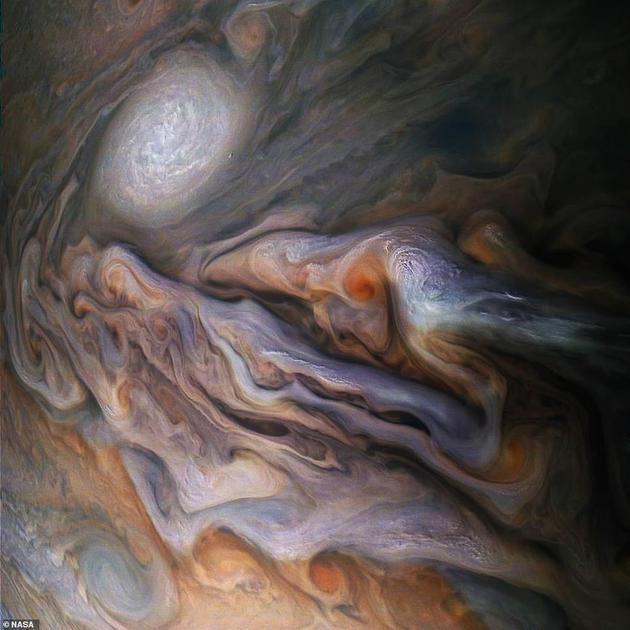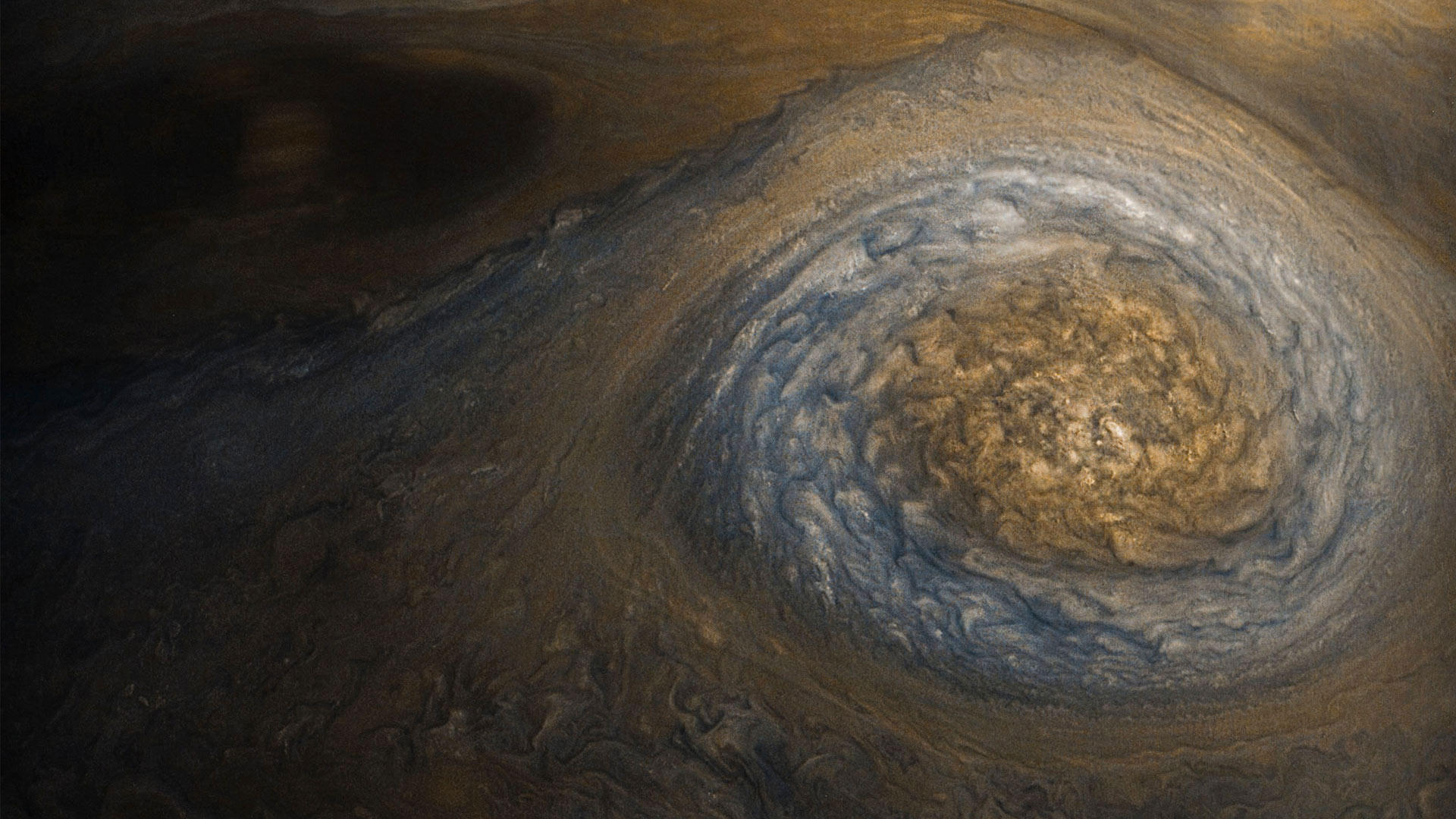标签 木星 下的文章
木星及木卫一的蒙太奇图像 Montage of images of Jupiter and its volcanic moon Io (© NASA/Johns Hopkins University Applied Physics Laboratory/Southwest Research Institute/Goddard Space Flight Center)
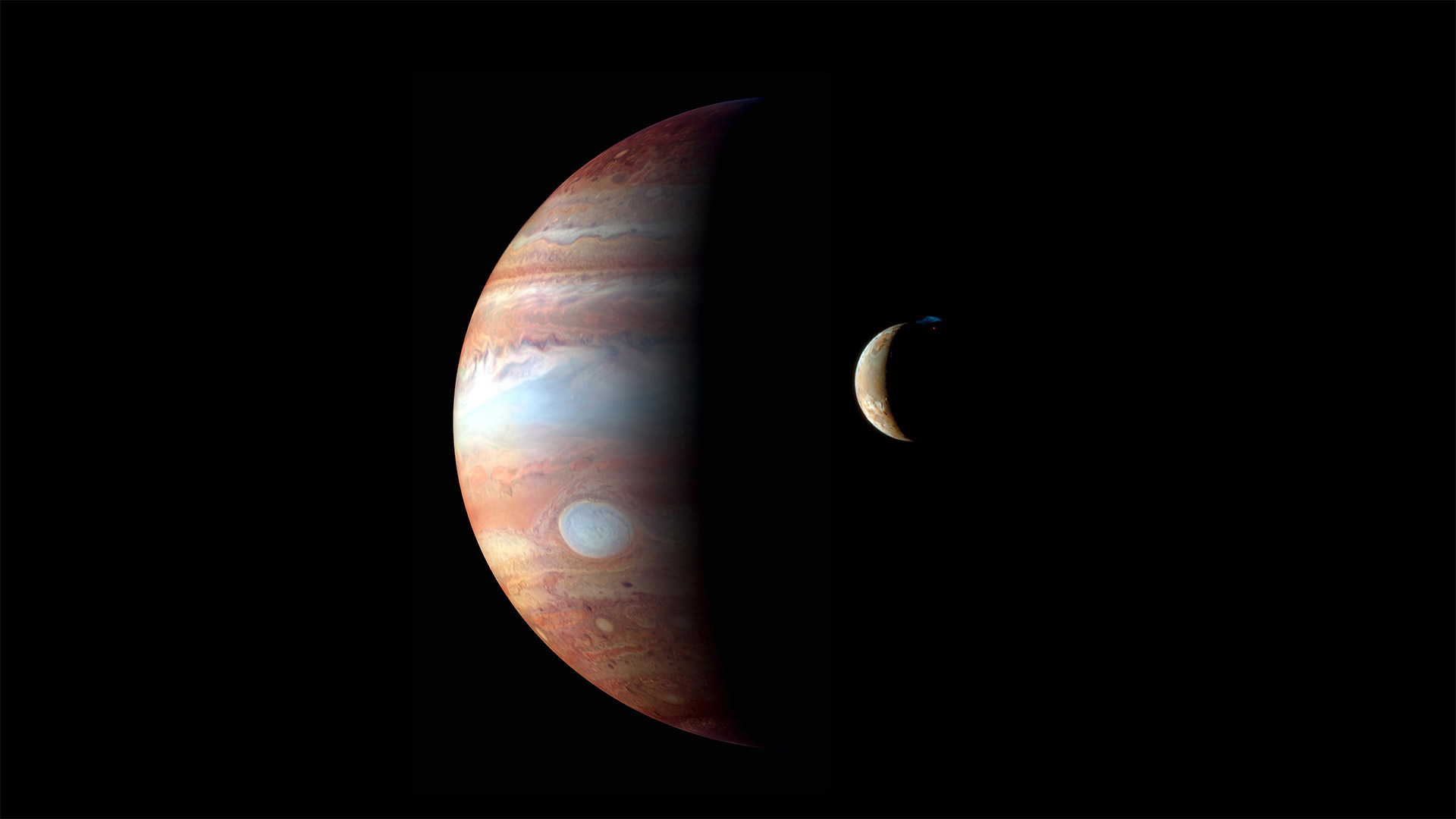
木星及木卫一的蒙太奇图像 Montage of images of Jupiter and its volcanic moon Io (© NASA/Johns Hopkins University Applied Physics Laboratory/Southwest Research Institute/Goddard Space Flight Center)
Infrared Jupiter, erupting Io
To celebrate World Space Week, we're featuring this montage of images of Jupiter courtesy of the New Horizons probe's flyby of the planet in 2007. If Jupiter looks a little different than you're used to seeing, it's because it was imaged using the space probe's near-infrared imaging spectrometer. In this false-color image, Jupiter's high-altitude clouds, like its stormy Great Red Spot, are rendered white, while deeper cloud formations take on reddish hues. The planet's innermost moon, Io, is captured in a true-color composite image during one of its frequent volcanic eruptions. A close look will show lava is glowing red beneath the blue and white plume of particles being ejected into the moon's thin atmosphere.
Space Week is a UN-recognized event that runs each year from October 4, which is the anniversary of the launch of Sputnik in 1957, to October 10, the anniversary of the signing of the Outer Space Treaty in 1967. This year's theme is 'Satellites Improve Life.'
木星的卫星——木卫一、木卫二、木卫三和木卫四 Moons of Jupiter—Io, Europa, Ganymede, and Callisto (© Branko Šimunek/Alamy)
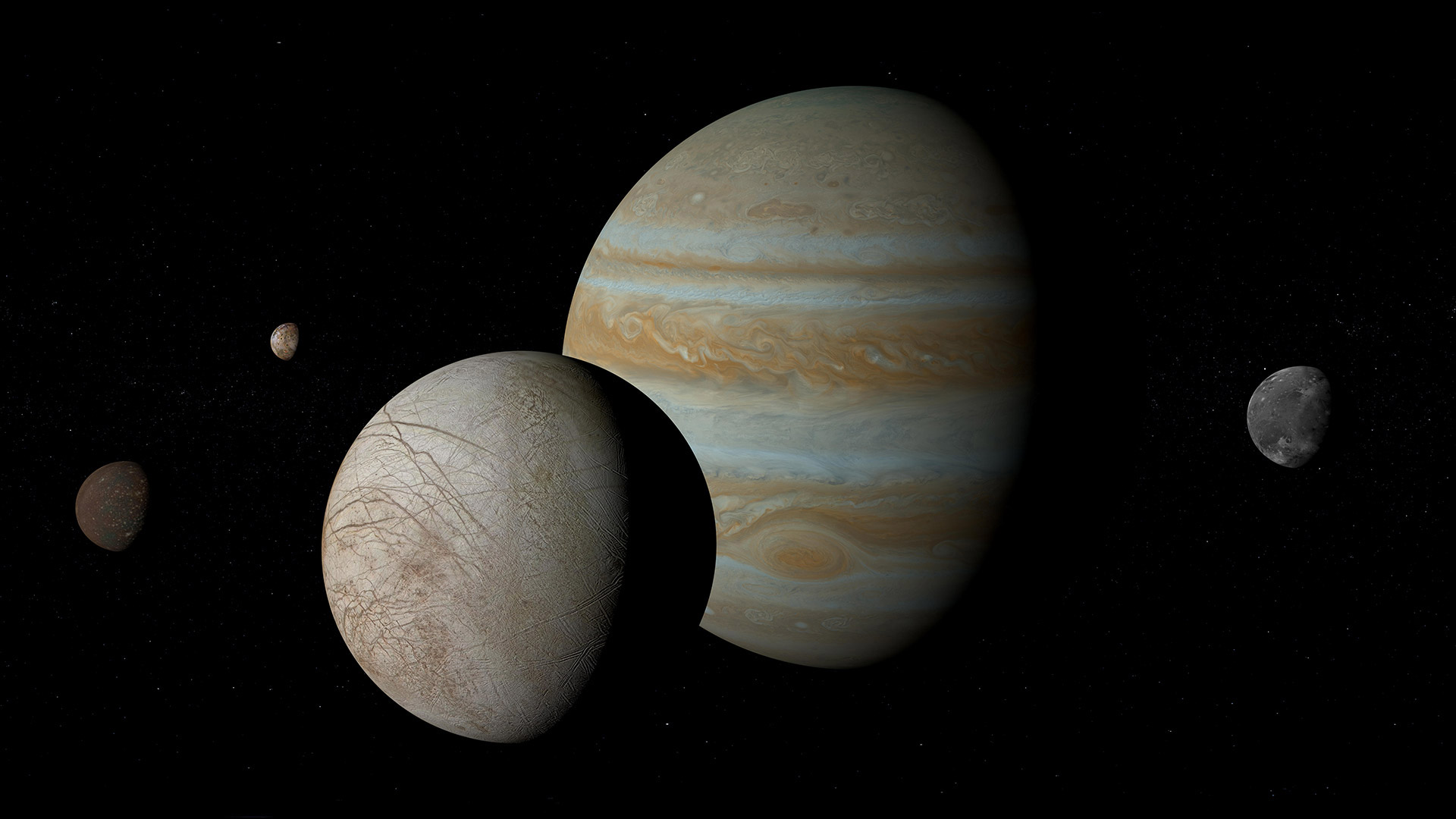
木星的卫星——木卫一、木卫二、木卫三和木卫四 Moons of Jupiter—Io, Europa, Ganymede, and Callisto (© Branko Šimunek/Alamy)
Jupiter and the Galilean Moons
On January 7, 1610, Galileo was the first person to train a telescope on Jupiter—and what he saw surprised him. Strung in a line beside the planet were three tiny stars, one to the left of the planet and two to the right. But when he observed the formation the next night, he saw that now all three were on the same side of Jupiter. Over the following week, he watched as the tiny stars (now joined by a fourth) changed their position relative to the planet while remaining beside it. By January 15, he had it figured out: he was observing four moons orbiting Jupiter.
It was a discovery that would have profound implications on our conception of the cosmos, providing crucial evidence that Earth was not the center of the universe around which everything rotated. Savvy as well as brilliant, Galileo named the four moons 'the Medicean Stars' after his patron, Cosimo Medici. But over the years, as the influence of the Medici family waned and the influence of the genius from Pisa waxed, they became known as the Galilean Moons: Io, Europa, Ganymede, and Calisto.
木星增强色彩后的一组镜头 Sequence of enhanced-color images of Jupiter (© Enhanced Image by Gerald Eichstädt and Sean Doran, CC BY-NC-SA, based on images provided Courtesy of NASA/JPL-Caltech/SwRI/MSSS)
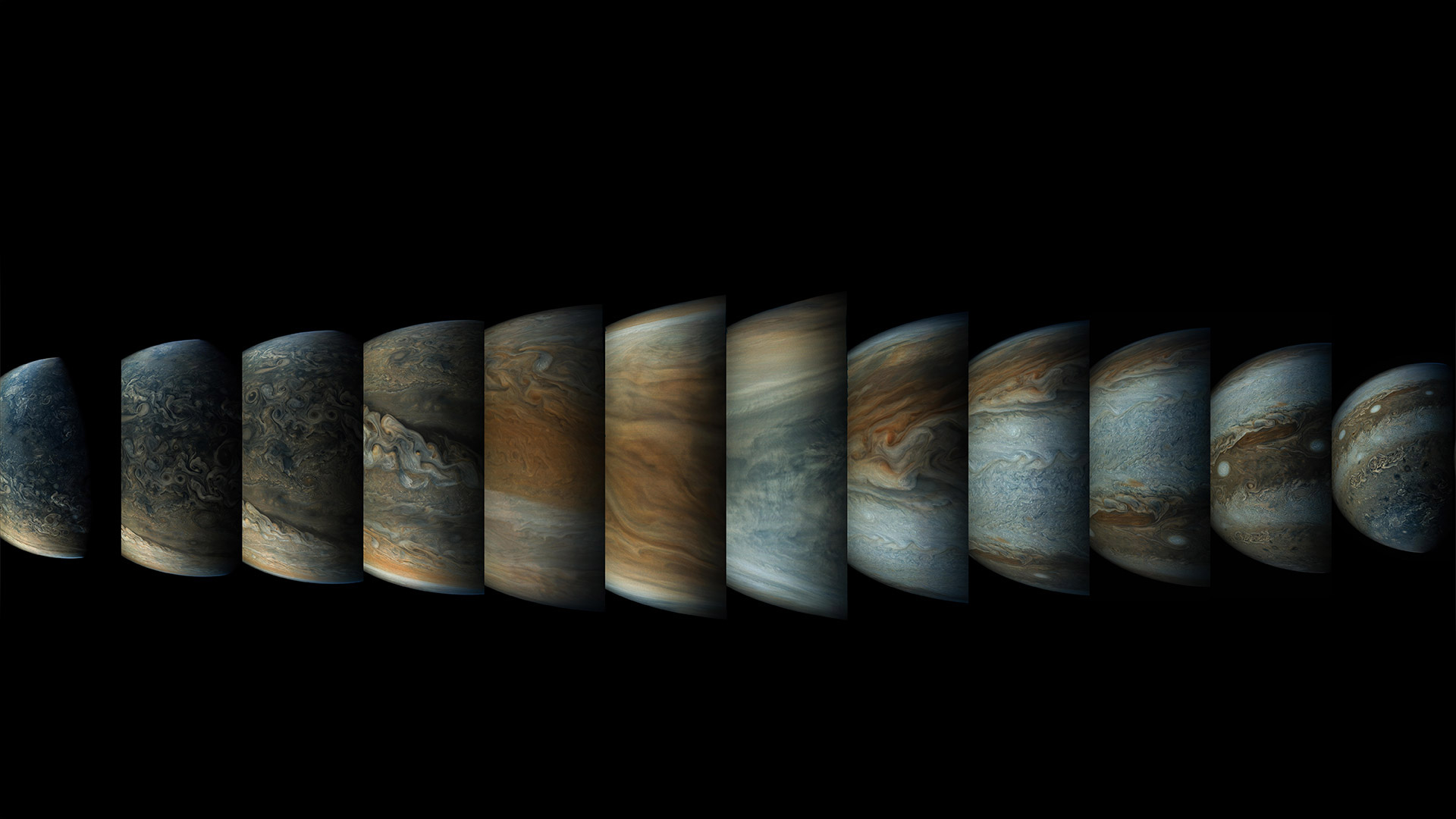
木星增强色彩后的一组镜头 Sequence of enhanced-color images of Jupiter (© Enhanced Image by Gerald Eichstädt and Sean Doran, CC BY-NC-SA, based on images provided Courtesy of NASA/JPL-Caltech/SwRI/MSSS)
Images from NASA's Juno spacecraft as it swoops by Jupiter
For the start of World Space Week, today's homepage features a composite of images taken by NASA's Juno probe as it swooped past Jupiter. Jupiter, the largest planet in our solar system, also has the largest number of moons: 79. Jupiter is the Roman counterpart to Zeus, and so the planet's major moons are named after Zeus's, shall we say, extra-marital partners. So, when it came time to name NASA's most ambitious Jupiter probe, they decided to name it after his wife, Juno, so that she could keep an eye on him. Every 53 days in the course of its wide and complex orbit, the Juno probe makes its closest approach, snapping shots like these as it speeds past the gas giant in just two hours. World Space Week starts on the anniversary of the launch of the very first space probe, Sputnik, which entered orbit around the Earth on October 4, 1957.
